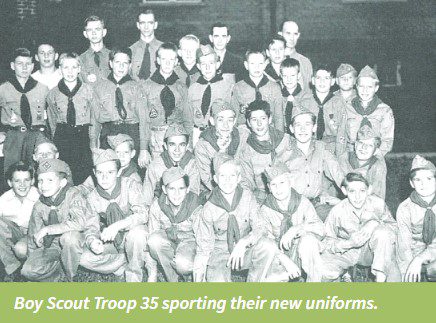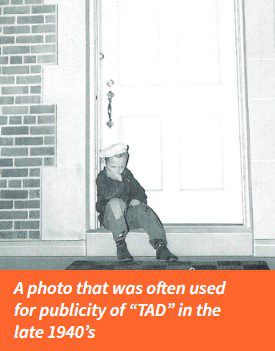Our Journey to 100 Years: A Hill Becomes a Home
To commemorate our milestone 100th anniversary, our series called “Our Journey to 100 Years” continues. In this series, we’re taking you through OHB’s history and highlighting people, events and notable moments that have gotten us to today. The information in this series is gathered from a book that was written by John Carter as a labor of love to chronicle the first 75 years of Omaha Home for Boys.
Today, we’re diving into the few short years from 1945 to 1948 when a hill became a home.

In July 1945, the big move took place when boys were transported by bus from the Home’s original location on South 33rd Street to what is still our home today on 52nd and Ames Streets. What changes were in store as everyone settled in at their new home on Inspiration Hill!
There were new schools to attend, new churches to visit every Sunday, and new countryside to explore; however, one of the biggest changes resulting from the move was the transition from dormitory living to residing under the watchful eye of a housemother in one of the three brand new cottages that had been built. As the boys were taken to the cottages atop the hill, they were assigned to their new living quarters on the spot –the youngest to the Buck Cottage, the middle boys to the Neef Cottage, and the oldest to the Shrine Cottage.

At the time, the Shrine Cottage served many purposes. Not only did it house the oldest boys, but it also served as administrative offices, a library, meeting space and dining hall. An intern from Immanual Hospital visited the Shrine Cottage two or three times a week to cure the boys’ minor ailments and the Superintendent and his family lived there for a few years as well.
Growth continued during this period with the construction of the Scott Cottage, the Anderson cottage and the High Twelve Cottage, all of which opened their doors by 1948, just a few short years after the first boys moved to our new home.
In addition to the construction, there were changes on other fronts too. A Boy Scout troop involving 35 youngsters was organized. Max Green, a resident from 1944 to 1952 recalls, “Our Scout group met in the basement of the Neef Cottage and there were Friday and Saturday night movies there as well. I remember being called on often to carry the very heavy cans of film for the projectionist.”

In 1948, the Home was approached by Harold F. Chenoweth, a producer who had been making movies in Omaha since 1920. He proposed making a promotional film which could be shown to interested groups and even mailed out all over the country, a very novel idea for that time. “TAD” a full color 27-minute production was the result.
In just three short years that marked much growth and change, a hill had become a home.